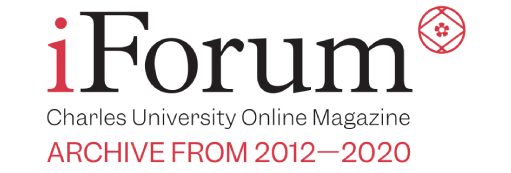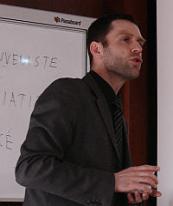A History with a Difference
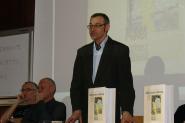

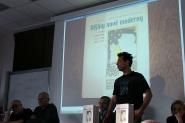

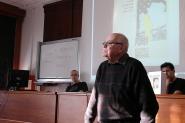

15 March 2011
On March 3, 2011, the Institute of Czech Literature and Literary Studies organized an event to promote the book “Dějiny nové moderny. Česká literatura v letech 1905–1923” (The History of New Modernism. Czech Literature 1905–1923). Co-organized by the Students’ Council of the Charles University Faculty of Arts, the event took place in a lecture hall on the faculty’s premises on náměstí Jana Palacha. The presentation included a discussion with students and other guests on how to write literary history.
The publication, shortlisted for this year’s Magnesia Litera Awards, aims to present literary history in a non-conventional way. At the heart of the authors’ approach is an effort to tell the stories of literary texts in the individual years in a way that emphasises their mutual connections and conflicts. The authors also followed the changes of the period’s literary speech and imagination, the infiltration of the language of Modernism into traditional discourse, their contrapuntalism and various manners of coexistence.
The period studied begins in 1905 when F.X. Šalda published his collection of essays “Boje o zítřek” and Prague hosted an exhibition of Edvard Munch’s works (its poster is featured on the book’s cover). It ends in 1923, the year that Jaroslav Hašek died and a new Poetist avant-garde was gradually being established.
|
“This publication was written over the course of the past five years as a result of a research project involving two research centres – The Institute of Bohemian Studies of the Faculty of Philosophy of the University of South Bohemia led by Professor Papoušek and the Institute of Czech Literature and Literary Studies. The book was published last year by Academia,” those were the opening words of the head of the Institute of Czech Literature and Literary Studies and the book’s co-author PhDr. Jan Wiendl, Ph.D. Dr. Wiendl also said: “The book consists of three layers. |
|
The central part is introduced by a chapter by P.A. Bílek and V. Papoušek discussing the issue of writing literary history. Another two chapters, titled ‘The Paradigm of New Modernism – Changes in Literary Discourse in 1905–1923’ and ‘The First Two Decades or the Physiognomy of Modernism between Tradition and Innovation, the Unconscious and “Strict Science”, Enthusiasm and the Art of Extreme’, discuss aspects of Modernism and avant-garde not only in a Czech context but also in broader European literary, cultural and social circumstances. The following chapters are devoted to the individual years 1905–1923. The years are virtual playgrounds giving each of the authors a chance to identify the main points and interpret the story based on them.”
The book is the first in a series within a project aiming to capture the whole of the 20th century literary history. The next volume is going to concentrate on the 1924–1934 period in Czech literary history.

On April 10 we will find out whether the book has succeeded in the Magnesia Litera Awards. So far it has been awarded the Jury Prize for an Encyclopaedic Work by the Union of Interpreters and Translators at its “Dictionary of the Year” event.
(Lucie Kettnerová)
Guests participating in the discussion on how to write literary history were most interested in how the authors and works featured in the book had been selected, why German-speaking writers were not represented more and how the rich pictorial material had been assembled.
Translation: Pavla Horáková
